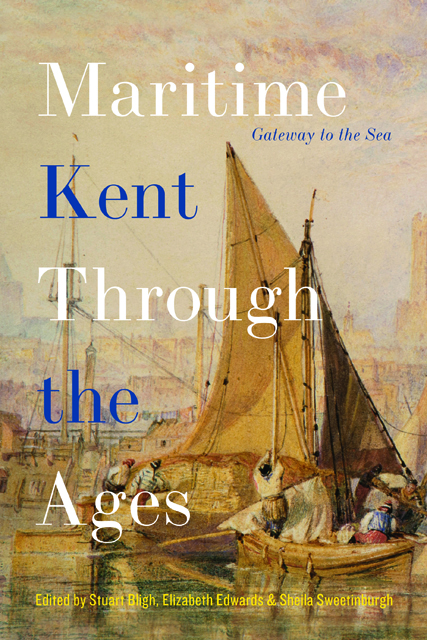23 - Afterword
Published online by Cambridge University Press: 20 December 2023
Summary
Kent’s strategic importance to England, and then Britain, ensures that the county’s maritime history invariably has national significance. The wide-ranging essays in this volume, spanning a period from the Roman landings in 55 BC to the present, demonstrate that the maritime history of Kent is a dynamic focus of discussion illuminating modern developments. Chris Young’s topographical preface resonates with current environmental concerns. An unbroken land mass joined south-east England to France until around 450,000 years ago, and since then Kent’s coastline has seen immense and long-term changes. It is surprising to learn, for instance, that in Roman times the Kent cliff line was at least 500m further offshore than today, the sea level being some 4m lower. David Killingray returns to this theme: rising sea levels due to global warming now threaten low-lying coastal regions of Kent, and their communities.
Successive essays yield other fascinating and little-known facts that help to place Kent’s characteristics in a historical context. For example, we learn that by the end of the third century, Kent could boast the largest concentration of fortifications anywhere in Britain south of Hadrian’s Wall. Already, by the early fourteenth century, Kent’s maritime defences were so strategically important that the county was recognised as the ‘key to England’. Forts and defensive works continued to be built or enlarged into the mid-nineteenth century, not least to protect the major royal dockyards at Deptford, Woolwich, Chatham and Portsmouth. And we learn from Andrew Lambert that Kent’s defences were also needed to help the Royal Navy maintain its dominance in the English Channel, the North Sea and sometimes the Baltic regions. References in this volume to the rapid industrial expansion that occurred around Kent’s coastline from the nineteenth century, much of it related to the nation’s energy needs, also give historical context to the wind farms now extending over the Kentish Flats off Whitstable.
Kent’s coastal communities were clearly resilient and capable of adapting to change. Unhealthy marshlands were inhabited early on because they offered good conditions for salt production as well as pasturing. From the Middle Ages, changes to the shoreline made access to the port of Sandwich increasingly difficult but residents persevered; Sandwich continued to be a centre of maritime trade and a useful communications link to the Continent until the early sixteenth century.
- Type
- Chapter
- Information
- Maritime Kent through the AgesGateway to the Sea, pp. 487 - 492Publisher: Boydell & BrewerPrint publication year: 2021

